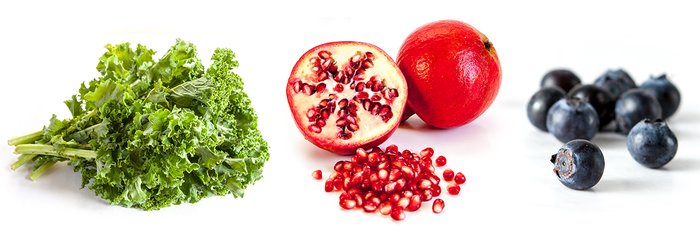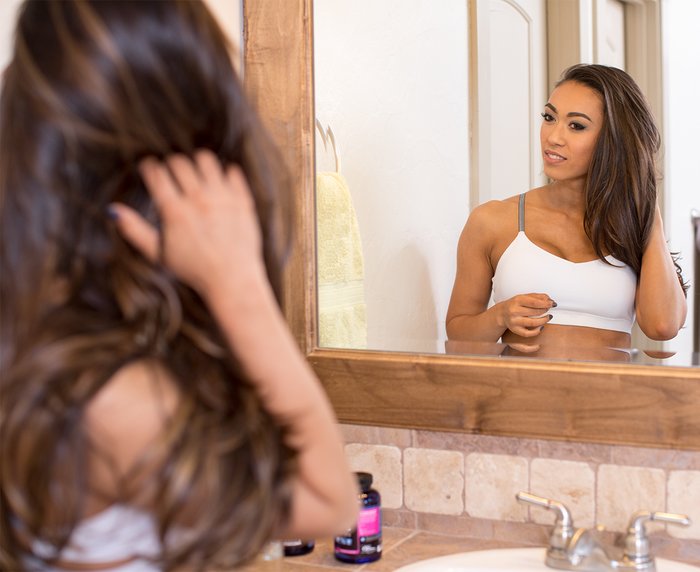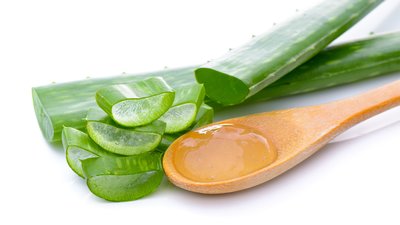Chances are, at least once in your life you've gotten a little too much sun and spent the next few days slathered in aloe vera gel. Aloe vera has become well known for its ability to soothe sunburns, but it offers many other benefits as well.
What Is Aloe Vera?
Aloe vera is tropical in origin, but it has become increasingly popular as a household plant. It's easy to care for and visually pleasing, and the gel from its leaves can be used to treat all manner of human ailments.

Aloe vera's fleshy leaves contain both a gel and a juice, known as latex. The gel is clear, contains more than 75 different components, and is safe to ingest. The juice is found on the outer rim of the inside of the leaf, has a yellow color, and can have a laxative effect when ingested.[1]
What Are the Uses of Aloe Vera?
Records of aloe vera being used for its medicinal properties date as far back as ancient Egypt. Today, it offers a whole host of benefits:
Delivers Vitamins and Minerals
Aloe vera is often considered to belong to the superfood family along with kale, pomegranate, and blueberries. These foods earn the name "super" because of their ability to fight infection and heal cell damage.[2]
Aloe vera contains many minerals including calcium, chromium, copper, selenium, magnesium, manganese, potassium, sodium, and zinc. It's also a ready source of vitamins A, C, and E—all of which are powerful antioxidants—and of B-12, folic acid, and choline.
Helps Hydrate the Body
Aloe has a similar vitamin and mineral profile to most common sports drinks, so it's a good way to rehydrate after a tough workout. True aloe vera has a taste that is tangy and tart, so read your aloe juice labels since some manufacturers try to hide the tart taste with excessive sugar.
Note that the plant's nutritive post-workout value is found in the gel alone. Since the latex can have a laxative effect, aloe-juice-based drinks can deplete the body of electrolytes.
Soothes the Gastrointestinal Tract
Data suggests that aloe vera could be used to calm heart burn and indigestion symptoms.[3]
Moisturizes the Skin
Aloe vera is also widely used in cosmetics. A 2014 clinical study highlighted the gel's hydrating effects when applied to the skin.[4] Many anti-aging and skin-brightening creams use aloe vera in their ingredient list because of its ability to stimulate collagen and elastin, which help maintain skin resilience.[5] The combination of hydration and skin-tightening properties make aloe vera ideal for skin-care routines.
Keeps Hair Strong and Healthy
Due to aloe's rich vitamin composition, it has become a standard ingredient for many hair-care products. Deficiency in vitamin B-12 and folic acid can cause hair to become brittle and prone to falling out. Regular use of aloe vera-based shampoos can help keep hair strong and healthy.

Since B-12 and folic acid are more abundant in animal products, aloe vera dietary products may help people who follow a vegan or vegetarian diet maintain good hair health.
The vitamins A, C, and E in aloe can help keep hair shiny and smooth. And its benefits to the skin can decrease scalp irritations and relieve dandruff and dry scalp to help hair to grow faster and fuller.[6]
How Do I Make Aloe Vera Gel at Home?
To prepare aloe vera gel at home, snip a leaf from the plant and stand it upright on a saucer to let the latex juice drain from the plant. When the latex has drained off, cut open the leaf and scoop out the clear gel from the inside. You can use the gel immediately. If you want to use it later, put it in a glass jar and freeze it. Some people pour the gel into ice cube trays for use later in protein shakes.
Does Aloe Vera Have Any Negative Effects?
Aloe vera side effects can include skin irritations in the area where it was applied. While it can sooth gastrointestinal distress in individuals, it may cause abdominal cramps and electrolyte imbalances in others—especially if they ingest the plant's latex juice. Make sure your aloe drink is made from the plant's gel, not its juice.[3]
Bottom line, it's never too late to make this plant and its related products a permanent feature of your home medicine cabinet.
References:
- Lawrence, R., Tripathi, P., & Jeyakumar, E. (2009). Isolation, purification and evaluation of antibacterial agents from Aloe vera. Brazilian Journal of Microbiology, 40(4), 906-915.
- Valko, M., Leibfritz, D., Moncol, J., Cronin, M. T., Mazur, M., & Telser, J. (2007). Free radicals and antioxidants in normal physiological functions and human disease. The International Journal of Biochemistry & Cell Biology, 39(1), 44-84.
- Fox, L. T., Du Plessis, J., Gerber, M., Van Zyl, S., Boneschans, B., & Hamman, J. H. (2014). In vivo skin hydration and anti-erythema effects of Aloe vera, Aloe ferox and Aloe marlothii gel materials after single and multiple applications. Pharmacognosy Magazine, 10(Suppl 2), S392.
- Panahi, Y., Khedmat, H., Valizadegan, G., Mohtashami, R., & Sahebkar, A. (2015). Efficacy and safety of Aloe vera syrup for the treatment of gastroesophageal reflux disease: a pilot randomized positive-controlled trial. Journal of Traditional Chinese Medicine, 35(6), 632-636.
- Surjushe, A., Vasani, R., & Saple, D. G. (2008). Aloe vera: A short review. Indian Journal of Dermatology, 53(4), 163.
- Vardy, D. A., Cohen, A. D., Tchetov, T., Medvedovsky, E., & Biton, A. (1999). A double-blind, placebo-controlled trial of an Aloe vera (A. barbadensis) emulsion in the treatment of seborrheic dermatitis. Journal of Dermatological Treatment, 10(1), 7-11.

